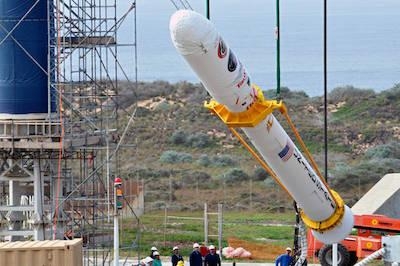Accidents Occurred In 2009 And 2011
NASA Launch Services Program (LSP) investigators have determined the technical root cause for the Taurus XL launch failures of NASA’s Orbiting Carbon Observatory (OCO) and Glory missions in 2009 and 2011, respectively: faulty materials provided by aluminum manufacturer, Sapa Profiles, Inc. (SPI).

LSP’s technical investigation led to the involvement of NASA’s Office of the Inspector General and the U.S. Department of Justice (DOJ). DOJ’s efforts, recently made public, resulted in the resolution of criminal charges and alleged civil claims against SPI, and its agreement to pay $46 million to the U.S. government and other commercial customers. This relates to a 19-year scheme that included falsifying thousands of certifications for aluminum extrusions to hundreds of customers.
NASA’s updated public summary of the launch failures, which was published Tuesday, comes after a multiyear technical investigation by LSP and updates the previous public summaries on the Taurus XL launch failures for the OCO and Glory missions. Those public summaries concluded that the launch vehicle fairing — a clamshell structure that encapsulates the satellite as it travels through the atmosphere — failed to separate on command, but no technical root cause had been identified. From NASA’s investigation, it is now known that SPI altered test results and provided false certifications to Orbital Sciences Corporation, the manufacturer of the Taurus XL, regarding the aluminum extrusions used in the payload fairing rail frangible joint. A frangible joint is a structural separation system that is initiated using ordnance.
“NASA relies on the integrity of our industry throughout the supply chain. While we do perform our own testing, NASA is not able to retest every single component. That is why we require and pay for certain components to be tested and certified by the supplier,” said Jim Norman, NASA’s director for Launch Services at NASA Headquarters in Washington. “When testing results are altered and certifications are provided falsely, missions fail. In our case, the Taurus XLs that failed for the OCO and Glory missions resulted in the loss of more than $700 million, and years of people’s scientific work. It is critical that we are able to trust our industry to produce, test and certify materials in accordance with the standards we require. In this case, our trust was severely violated.”
To protect the government supply chain, NASA suspended SPI from government contracting and proposed SPI for government-wide debarment. The exclusion from government contracting has been in effect since Sept. 30, 2015. NASA also has proposed debarment for Hydro Extrusion Portland, Inc.,formerly known as SPI,and the company currently is excluded from contracting throughout the federal government.
“Due in large part to the hard work and dedication of many highly motivated people in the NASA Launch Services program, we are able to close out the cause of two extremely disappointing launch vehicle failures and protect the government aerospace supply chain,” said Amanda Mitskevich, LSP program manager at NASA’s Kennedy Space Center in Florida. “It has taken a long time to get here, involving years of investigation and testing, but as of today, it has been worth every minute, and I am extremely pleased with the entire team’s efforts.”
(Image provided with NASA news release)
 ANN's Daily Aero-Term (05.09.24): Hold Procedure
ANN's Daily Aero-Term (05.09.24): Hold Procedure ANN's Daily Aero-Term (05.06.24): Altitude Readout
ANN's Daily Aero-Term (05.06.24): Altitude Readout ANN's Daily Aero-Linx (05.06.24)
ANN's Daily Aero-Linx (05.06.24) Airborne-NextGen 05.07.24: AI-Piloted F-16, AgEagle, 1st 2 WorldView Sats
Airborne-NextGen 05.07.24: AI-Piloted F-16, AgEagle, 1st 2 WorldView Sats Aero-News: Quote of the Day (05.07.24)
Aero-News: Quote of the Day (05.07.24)



